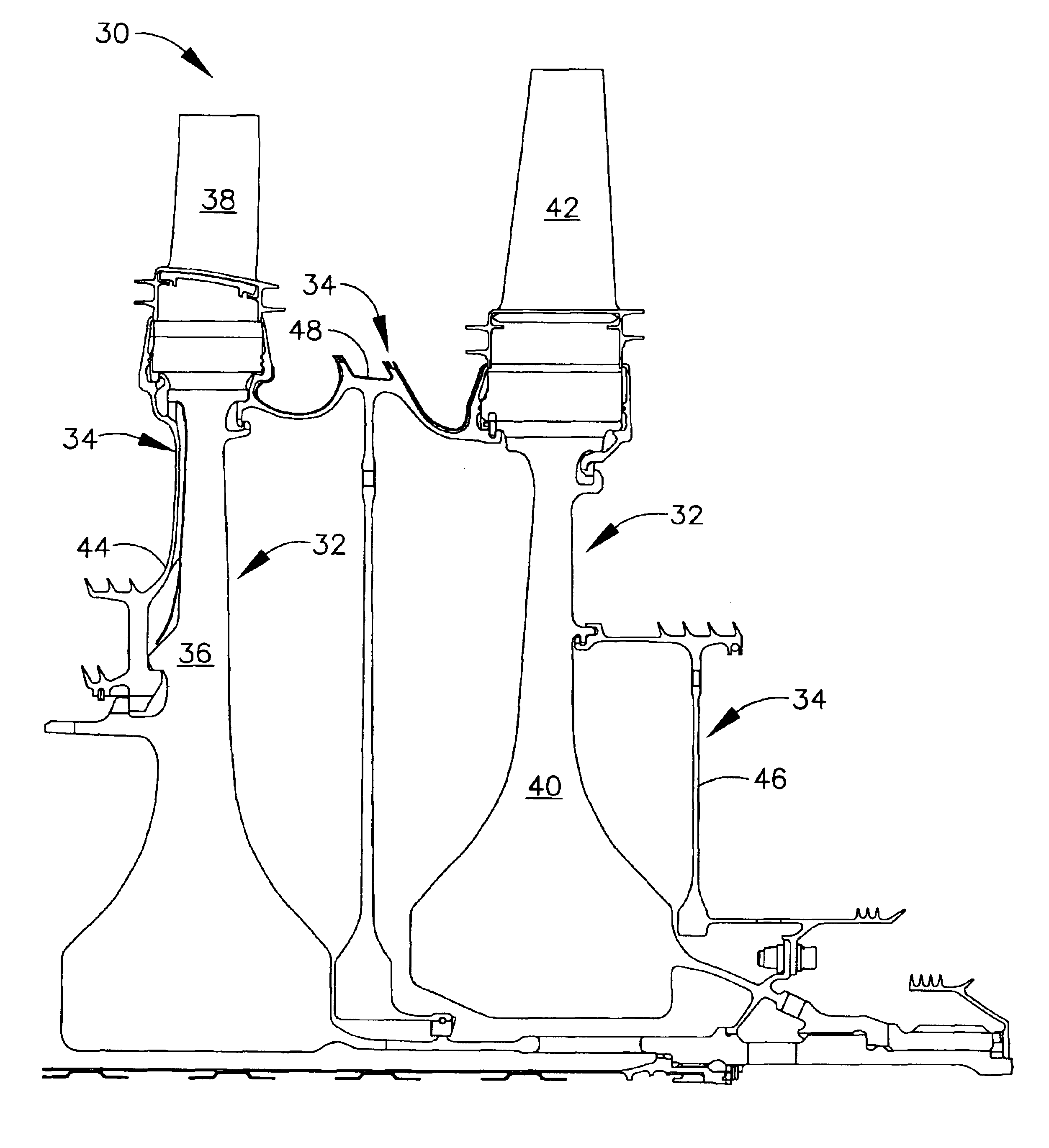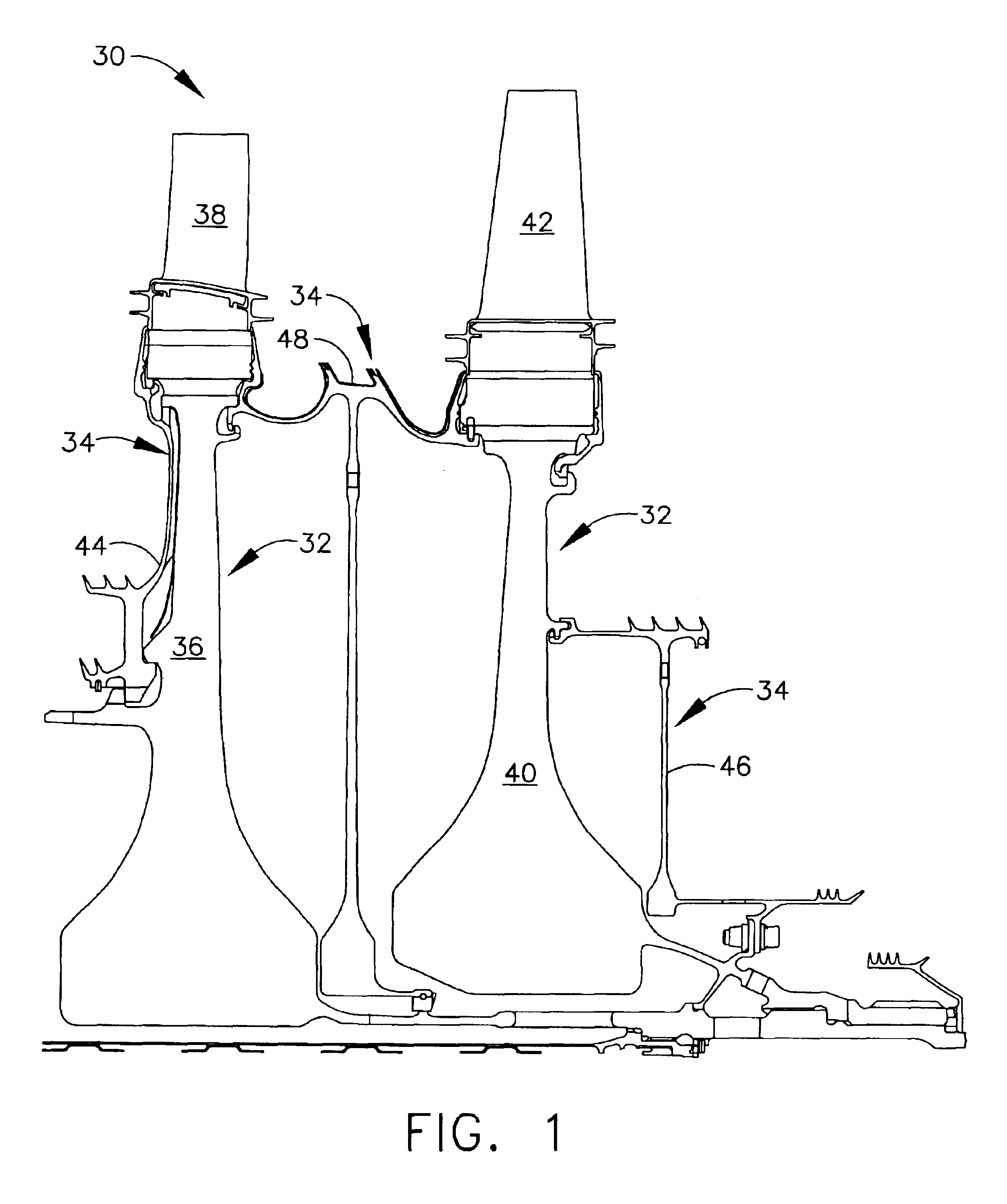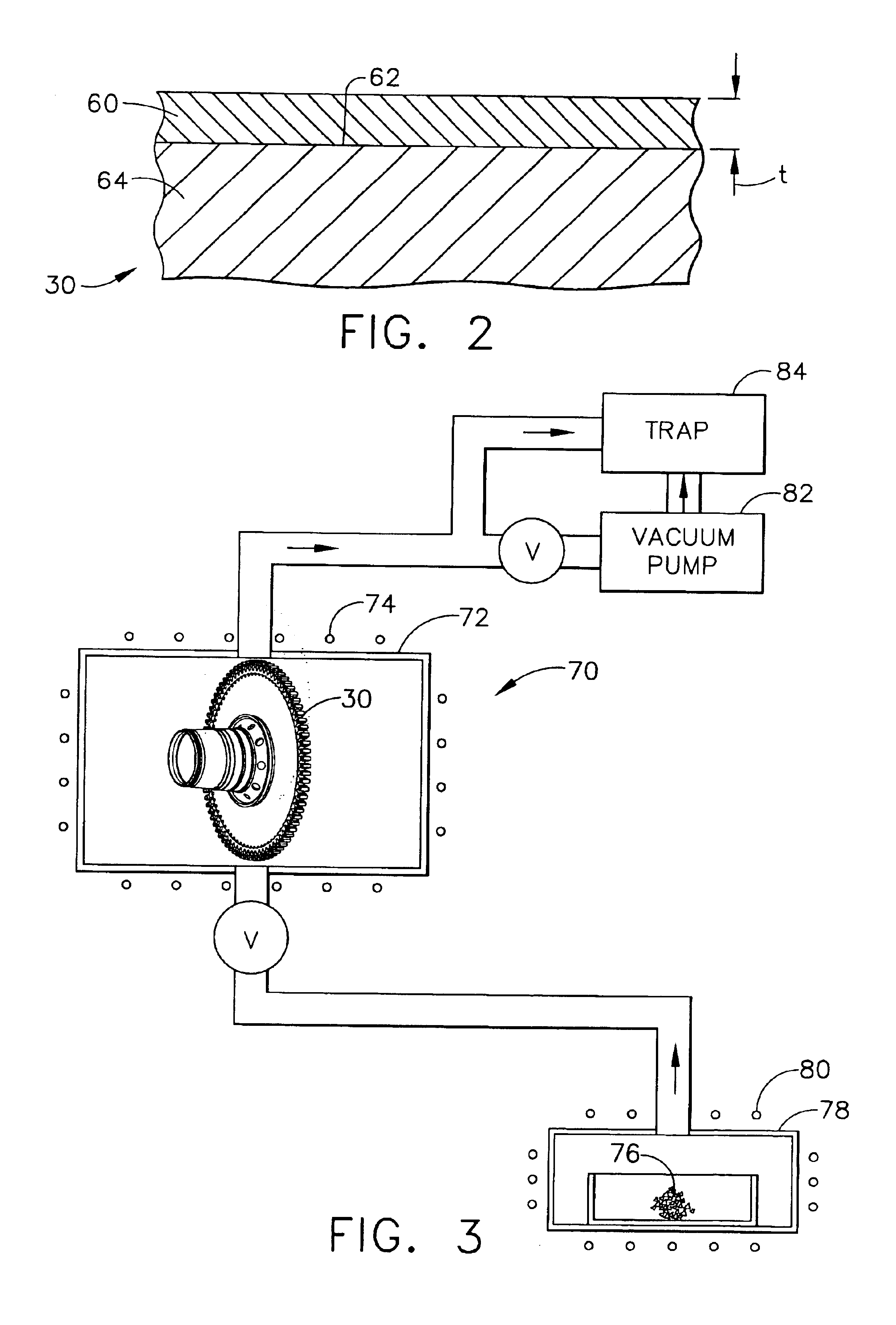Aluminide or chromide coating of turbine engine rotor component
a technology of turbine engines and rotor components, applied in the direction of solid-state diffusion coating, chemical vapor deposition coating, machines/engines, etc., can solve the problems of premature removal and replacement accelerated corrosion, and increased concern for oxidation and corrosion of disks and seal elements
- Summary
- Abstract
- Description
- Claims
- Application Information
AI Technical Summary
Problems solved by technology
Method used
Image
Examples
example 1
[0053]A process of the invention is used to form an aluminide coating on turbine disks in the coating container shown in FIG. 3. The disks are loaded into the coating container and heated to a temperature of about 270° C. A tri-n-butyl aluminum coating gas is then flowed into the coating container at a pressure of about 500 mtorr (about 6.8 kgf / m2) for about 5 hours to force the aluminum coating vapors to flow around the disks, thereby depositing an aluminum coating on the surface of the disks. The thickness of the aluminum coating is controlled by the temperature, gas flow, and elapsed time of the gas flow. The coated disks are then heated in a vacuum to a temperature of about 670° C. for about 5 hours to form an aluminide coating on the surface of the disks. The disks are then heated to a temperature of about 700° C. for 8 hours in the presence of oxygen at a partial pressure of about 10−3 torr (about 13.6 gf / m2) to form an oxide protective coating on the surface of the disks. The...
example 2
[0054]A process of the invention is used to form an aluminide coating on turbine disks in the coating container shown in FIG. 3. The disks are loaded into the coating container and heated to a temperature of about 450° C. A tri-n-butyl aluminum coating gas is then flowed into the coating container at a pressure of about 100 mtorr (about 1.4 kgf / m2) for about 1 hour to force the aluminum coating vapors to flow around the disks, thereby depositing an aluminum coating on the surface of the disks. The thickness of the aluminum coating is controlled by the temperature, gas flow, and elapsed time of the gas flow. The coated disks are then heated in a vacuum to a temperature of about 670° C. for about 1 hour to form an aluminide coating on the surface of the disks. The disks are then heated to a temperature of about 700° C. for 8 hours in the presence of oxygen at a partial pressure of about 10−3 torr (about 13.6 gf / m2) to form an oxide protective coating on the surface of the disks. The o...
example 3
[0055]A process of the invention is used to form an chromide coating on turbine disks in the coating container shown in FIG. 3. The disks are loaded into the coating container and heated to a temperature of about 600° C. A hexacarbonyl chromium coating gas is then flowed into the coating container at a pressure of about 1000 mtorr (about 14 kgf / m2) for about 1 hour to force the chromium coating vapors to flow around the disks, thereby depositing an chromium coating on the surface of the disks. The thickness of the chromium coating is controlled by the temperature, gas flow, and elapsed time of the gas flow. The coated disks are then heated in a vacuum to a temperature of about 670° C. for about 1 hour to form an chromide coating on the surface of the disks. The disks are then heated to a temperature of about 700° C. for 8 hours in the presence of oxygen at a partial pressure of about 10−3 torr (about 13.6 gf / m2) to form an oxide protective coating on the surface of the disks. The ox...
PUM
| Property | Measurement | Unit |
|---|---|---|
| temperature | aaaaa | aaaaa |
| operating temperature | aaaaa | aaaaa |
| thickness | aaaaa | aaaaa |
Abstract
Description
Claims
Application Information
 Login to View More
Login to View More - R&D
- Intellectual Property
- Life Sciences
- Materials
- Tech Scout
- Unparalleled Data Quality
- Higher Quality Content
- 60% Fewer Hallucinations
Browse by: Latest US Patents, China's latest patents, Technical Efficacy Thesaurus, Application Domain, Technology Topic, Popular Technical Reports.
© 2025 PatSnap. All rights reserved.Legal|Privacy policy|Modern Slavery Act Transparency Statement|Sitemap|About US| Contact US: help@patsnap.com



